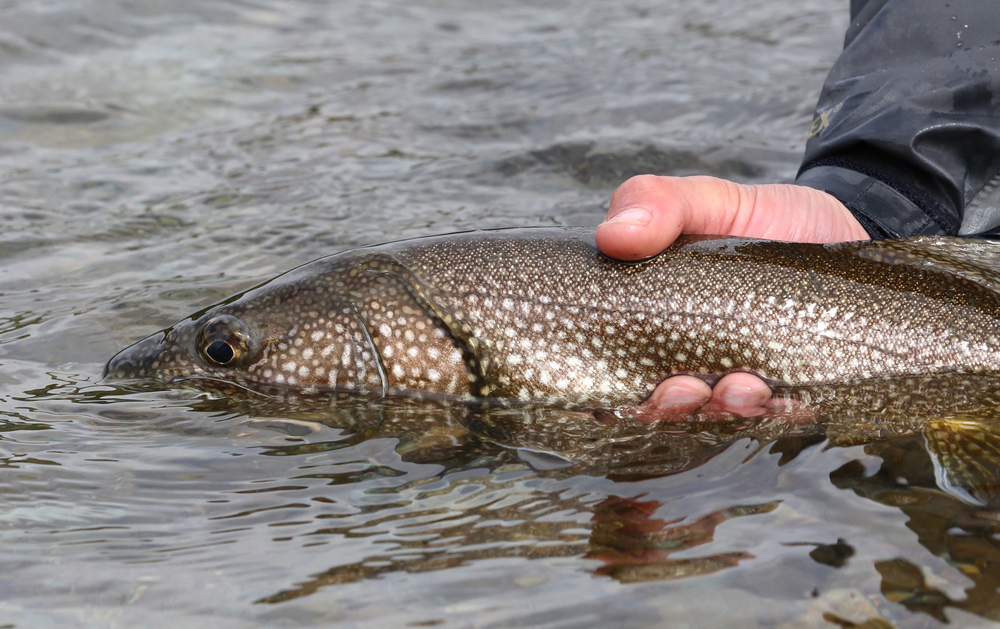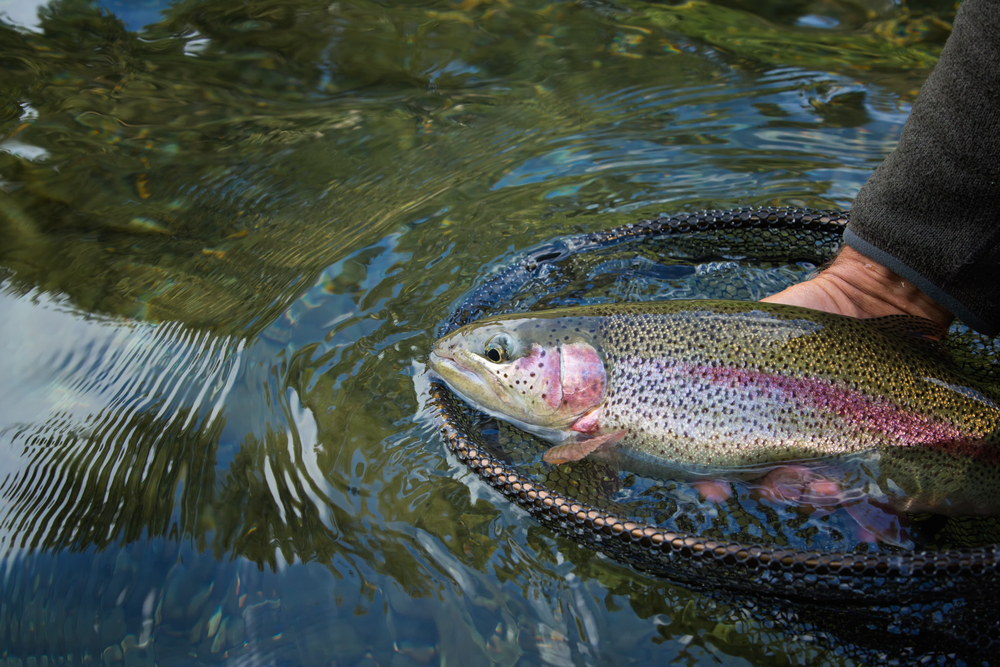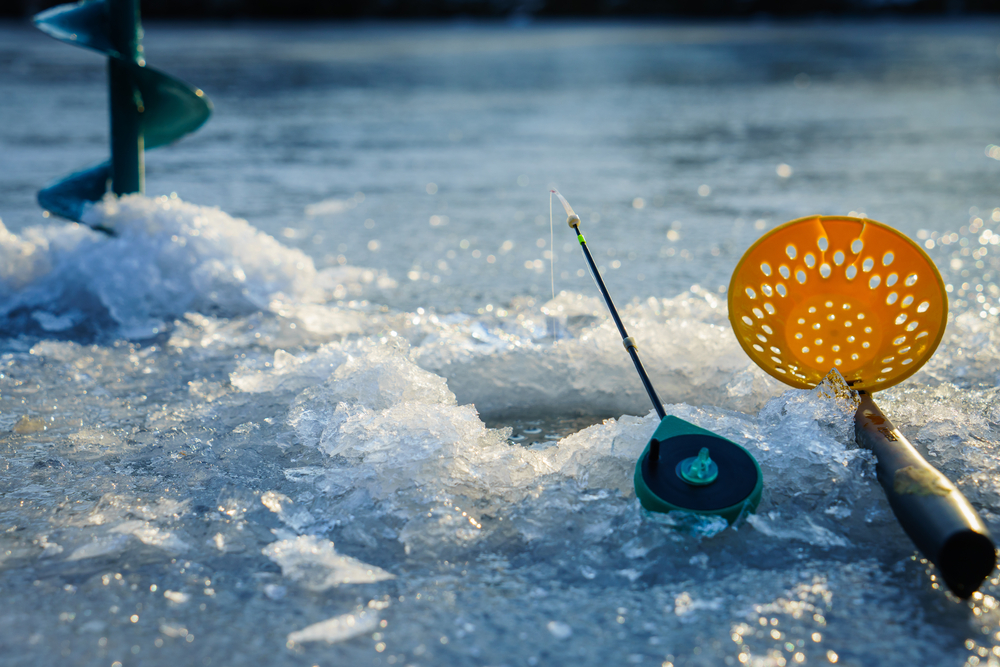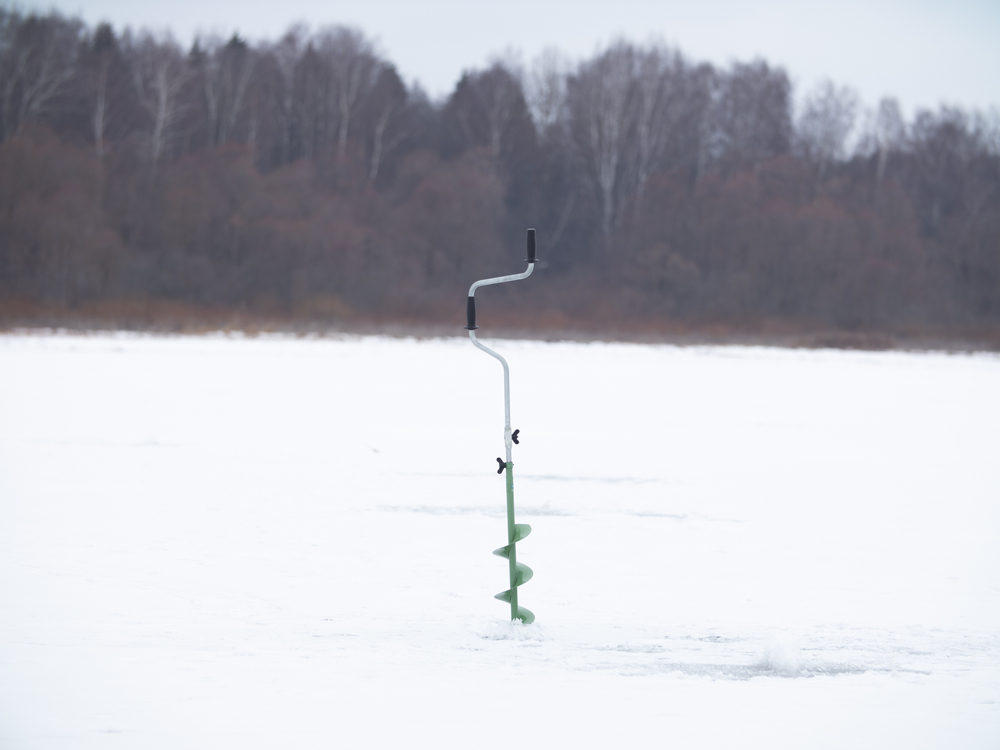A Quick Trout Intro
There are a wide variety of trout in North America and around the world. They are a freshwater and saltwater species that belong to a subfamily of Salmonidae. Trout range greatly in colors, patterns, and sizes among species. Generally, their patterns resemble that of their environment to help them camouflage. These colors can change as the fish travel from sea to rivers to mate.
Why Fish For Trout?
Fishing for trout is a loved activity among novice and professional anglers alike. These fish provide a strong and exciting fight when hooked, and it is precisely this excitement that draws so many anglers. In addition, trout makes for a delicious meal for anglers who choose to keep a few.
Fly Trout Fishing
Fly fishing for trout is the most popular and preferred method among anglers. Trout rivers and streams are common ground for fly fishermen. Anglers will use a variety of artificial flies depending on the species, location and time of year.
A Brief Discussion Of The Most Popular Trout Species
Brown Trout
The freshwater brown trout usually has a brownish tint that fades into a lighter cream color on the belly and has medium-sized dark spots. This fish can live to around 20 years, and in some places weigh as much as 44 lbs (20 kg). However, that kind of weight is quite rare. In smaller rivers a mature brown trout will weigh around 2 lbs (1 kg) and will live several years.
The brown trout is known to be very clever and quite elusive. Attempting to catch one can, at first, be a frustrating experience. Learning more about this species and understanding its patterns can help you concentrate your efforts in more productive ways.
Brown trout feed by day and night and follow an opportunistic feeding style. Their freshwater diet consists of other fish, frogs, mice, birds, streambed invertebrates, and insects that fly near the surface of the water. Fly fishing works very well because these fish rely heavily on insect larvae and pupae, both nymphs and adults. The best way to choose the right trout fly is to try and imitate the natural sources of food at the local trout stream.
There are a few reasons that make the pursuit of brown trout a daunting task. Oftentimes, they will prefer to feed at night and stay hidden during the day. When they do feed, they choose secluded areas, staying in one spot rather than chasing their prey. Therefore, when fishing for brown trout, choosing the correct spot is monumental to increasing your chances of success. Getting one on the hook is quite a challenge.
Once hooked, the battle is just beginning. These fish are clever enough to try and tangle the line around different obstacles in the water in the hopes of cutting or snapping it. If that fails, the fish will often flop out of the water to attempt a different strategy of escape. Many times, the combination of these strategies succeeds.
Lake Trout

Lake trout have forked tails and are grayish with light spots. They grow very slowly but can still reach enormous sizes. The record lake trout was 102 lbs (46.3 kg).
Lake trout is a highly sought after fish because it makes for a delicious meal and is quite exciting to catch. It has even been nicknamed the poor man’s lobster. Its attractive features have often led to overfishing, prompting some areas to place strict regulations on anglers and commercial fishing. Some areas have number limits; other regions have a catch and release policy. When trout fishing in America or Canada, it is always a good idea to check the local regulations for fishing times and limits.
These fish are relatively rare around the world when compared to some other species. In North American, they are found in Canada, Alaska, and to a lesser extent northeastern United States. Around 25% of all trout lakes in the world are in Ontario, Canada. To get a better understanding of the rarity, only one percent of all Ontario lakes are lake trout lakes. Lake trout was also introduced to other parts of the world like Europe, South America, and some parts of Asia.
Lake trout depend on cold and oxygen-rich waters. In the summer they live at depths of 65-200′ (about 20-60 meters) to escape the heat. During this season, lake trout can be successfully fished by deep trolling, as the lines will effectively reach the depths where the trout spends its summer months. When the water is at cool temperatures during spring and fall, lake trout can be fished near shore, in shallower waters using artificial lures and flies. Fishing for lake trout during the day usually produces better results than by night. This is because they are able to see the bait a lot better during the day in the deep waters.
One of the more successful methods to fish for large lake trout is to use spoons. Shiny finishes on spoons help to make them more visible in deeper water where lake trout usually live.
Lake trout visit shallower waters during the spring and fall spawning seasons. For these conditions you can use a spoon, large inline spinners, lures, or bait.
Steelhead/Rainbow Trout

The steelhead trout is the ocean going form of the rainbow trout. We use the names interchangeably in our discussion as these are the same species.
Rainbow trout is one of the most sought after fish in North America. It is quite favored by novice and professional fly fishing enthusiasts for its impressive colors and fighting ability. They are typically silver or gray on the sides and olive greenish on the top with dark spots. They have torpedo shaped body and are usually brighter and more silver when coming from the sea. When they spend some time in freshwater, they will darken to a more slightly brownish color.
This fish can be found across six continents in trout rivers, trout streams, and trout lakes. Of course the ocean going steel head is also found in saltwater bays and open oceans, but returns to freshwater to spawn.
Rainbow trout are predators and will eat a wide variety of food. They typically eat invertebrates, crustaceans, and insects like mayflies, caddis flies, and black flies. When they are in flowing waters they will also eat fish eggs from salmon and other trout.
Rainbow and steelhead trout river fishing is very popular across North America. In fact, rainbow and steelhead fly fishing in America and Canada is among the top favorites amongst anglers. Fly anglers usually use an assortment of wet and dry insect imitations, streamers, and balls of yarn that imitate eggs.
Top 3 Trout Fishing Tips
Learn the Area
Knowing more about the area where you intend to fish for trout will definitely work to your advantage. Try to learn the temperature patterns, seasons, and the type of food that the trout feeds on locally. This information will help you in choosing the correct baits and seasons to fish. If you fish for trout in streams in the spring, then visit those same areas in the summer when the water is low. Take notes and draw maps of rocks, under cut banks, depressions, and fallen trees that might not be visible in high water levels. Fish will use the spots for cover when the water is high.
Don’t Let The Fish See You
What was that we said? That’s right; trout are a very clever fish. When you are river trout fishing in clear or shallow waters, they may be able to see all the anglers that are on shore. Therefore, wearing clothing that blends in well with the surrounding environment will make you stealthier and put the fish ease. Brighter colors that do no naturally belong in that habitat scream out to the fish that something is going on. They may get timid and that will put a damper on your river trout fishing ambitions. Also, stay as low as possible, move slowly and try to put some grass or brush between you and the water so that you don’t spook the fish.
Choose The Right Equipment
This one is kind of obvious. You need to go in with the right tools for the job. If you are a trout fishing novice, we suggest doing your research and asking the experts before you buy. In general, lighter line is used for trout fishing than most other types of fishing because trout have good eye sight and usually live in clear water.
Ice Fishing for Trouts

Ice fishing for trout is one of the more popular ice fishing activities among North American anglers. Here are some important tips to keep in mind when going ice fishing for trout.
Safety Is Number One
We mention this as the first priority for a reason. Never venture out on lakes with thin ice and do no put yourself in compromising situations. Make sure that the ice is at least four to six inches thick for walking and much thicker if you plan to use a vehicle.
Do Your Research
Read the latest local reports about weather and moon patterns. Trout respond heavily to changes in conditions. Finding out the best times to go trout ice fishing in your area can help assure a more successful trip.
Take Your Time
Trout are very sluggish under the ice and will normally not exert too much effort to catch their prey. You can not jerk the line hard or fast as that will only scare the fish. Use your lures to imitate a slow swimming prey and the trout will see it as an easy meal.
Drill In Different Locations
You need to drill several holes in a systematic pattern to see which ones produce the best results. You should map out the locations and drill the holes in a way that will allow you to test different depths.
Start The Drilling Early

Trout tend to bite well in the early morning hours during the winter. It is a wise idea to drill your fishing hole before sunrise so that when the fish come, you do not disturb them with the drilling.
Try Different Lures and Baits
There is never a one size fits all when ice fishing. You will need to try out different baits and lures to see which ones work best throughout your trip. When something is not working, try something else. Attempt to use different combinations of spoons, spinners, jigs, and baits to see what works.









